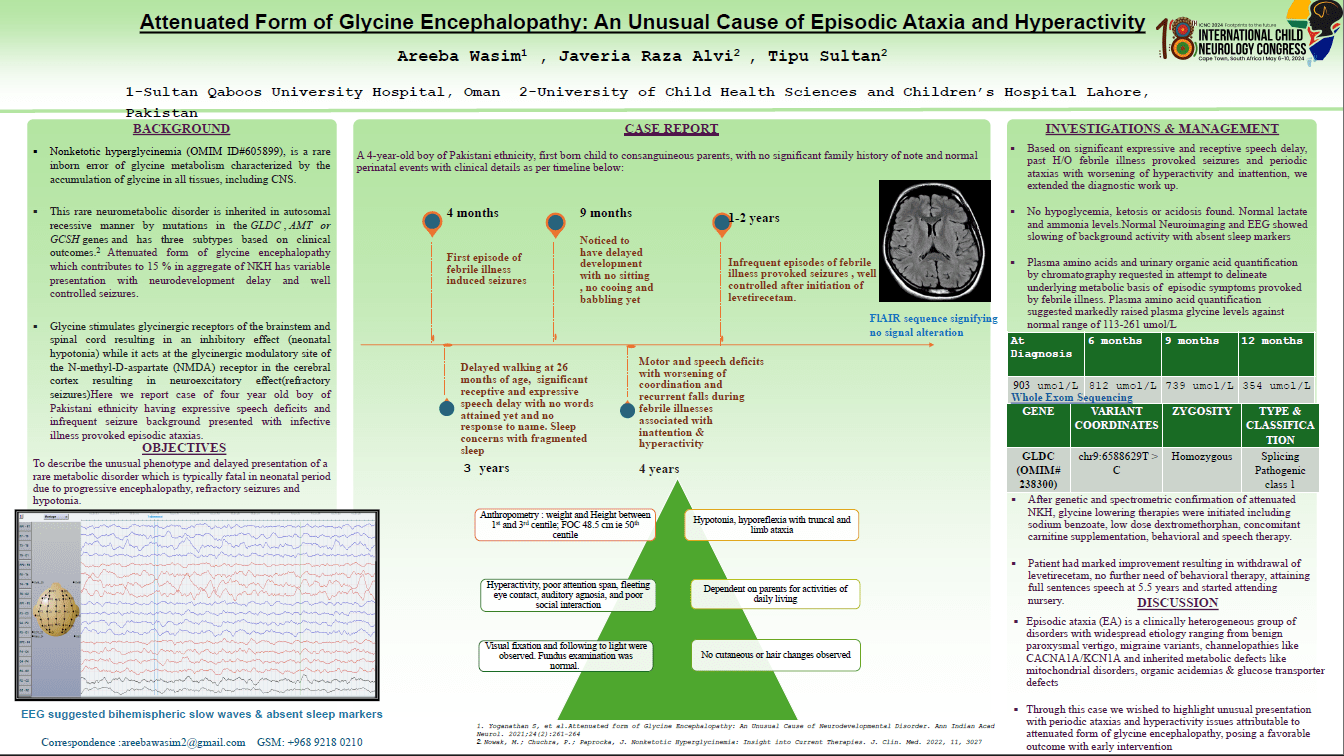Attenuated Form Of Glycine Encephalopathy: An Unusual Cause Of Intermittent Ataxia And Hyperactivity
Nonketotic hyperglycinemia (NKH), also known as glycine encephalopathy, is a rare inborn error of metabolism characterized by defect in glycine cleavage system. Refractory seizures in classical NKH are elucidated by glycinergic modulatory effect on N-methyl-D-aspartate (NMDA) receptor in the cerebral cortex resulting in neuroexcitation. Attenuated form of glycine encephalopathy which contributes to 15 % in aggregate of NKH has variable presentation with neurodevelopment delay and well controlled seizures. The pathogenesis of elevated glycine levels in attenuated glycine encephalopathy to cause intermittent ataxia and behavioral concerns is not well elucidated. Here, we report a four-year-old boy, first born to consanguineous parents, with significant expressive language and social delays presented with infrequent febrile illness induced tonic seizures since late infancy. Parents reported intermittent hyperactivity and aggressive behavior, poor response to name, fragmented sleep at night and intermittent ataxia with frequent falls pronounced with intercurrent infections. Amino acid analysis performed by high-performance liquid chromatography (HPLC) revealed an increased glycine level in serum (patient value: 903 umol/l and reference range: 113-261umol/l), whole exom sequencing showed de novo pathogenic homozygous mutation in GLDC gene causing glycine encephalopathy. Thereafter treatment with glycine lowering medications, anticonvulsants and behavioral therapy improved clinical outlook.
Areeba Wasim
Sultan Qaboos University Hospital
Oman
Javeria Raza Alvi
University of Child Health Sciences and Children's Hospital
Pakistan
Tipu Sultan
University of Child Health Sciences and Children's Hospital
Pakistan
